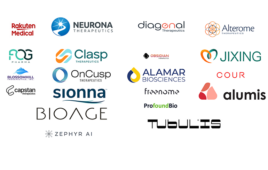Despite the disappointing history of drug development in pancreatic cancer, the current therapeutic pipeline and clinical development is headed in a promising direction, according to GlobalData, a data and analytics company.
Drug development has been highly challenging and replete with failure stories of pipeline agents investigated in pancreatic cancer, despite treatment algorithms being dramatically improved in many oncology indications. The very low success rate in clinical development stems to a great extent from pancreatic tumors being highly resistant to treatment. This is attributed to thick stromal tissue within pancreatic tumors which in turn contributes to immuno-suppression and limited access of therapies to the tumor site.
Volkan Gunduz, PhD, oncology and hematology senior analyst at GlobalData, says: “While previous clinical development programs directly targeted tumor cells, current clinical development includes Phase III programs which are specifically or co-targeting stromal tissue along with the tumor itself.”
Among these agents is AbbVie and Johnson & Johnson’s Bruton’s tyrosine kinase (BTK) inhibitor Imbruvica (ibrutinib), which eliminates tumor promoting survival signals from the tumor microenvironment. Another therapeutic candidate, Halozyme’s PEGPH20 (pegvorhyaluronidase alfa) degrades hyaluronan, a component of the tumor stroma and thereby makes the tumor tissue more permeable to drug delivery.
Meanwhile, preclinical research is identifying novel targets that could inspire further clinical development. Recently, emerging research from University of Texas MD Anderson Cancer Center in Houston identified Dickkopf-3 (DKK3) protein to be highly abundant in pancreatic tumor stroma. Targeting DKK3 in mouse models of pancreatic cancer resulted in immune cell infiltration and prolonged survival. Compared to healthy individuals, DKK3 levels are four and a half times higher in people with pancreatic cancer, making it a feasible therapeutic candidate.
Gunduz continues, “While pancreatic cancer progresses rapidly following diagnosis, it is estimated that it takes an average of about ten years from the initiating tumorigenic mutation to formation of a sizable tumor and metastatic spread to other parts of the body.
“There is a large window of opportunity here, where a better understanding of the disease evolution in this time frame could lead to development of more specific early diagnostic techniques, more effective novel treatment approaches, and identification of patient populations that will benefit most from novel therapies.”
(Source: GlobalData)
Filed Under: Drug Discovery and Development




